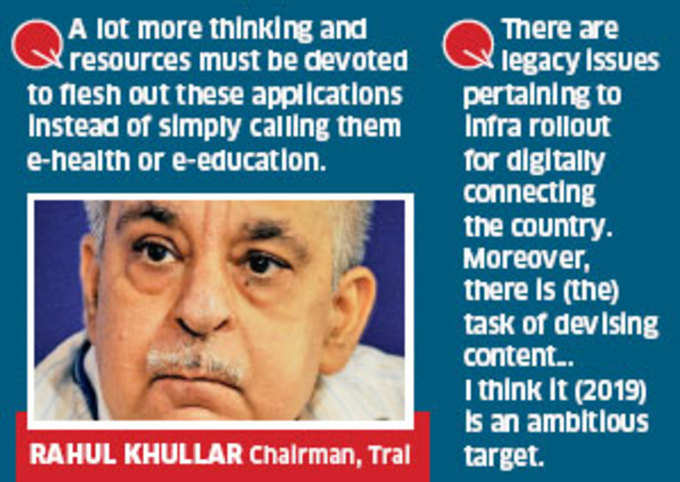If the government doesn’t put more thought into content, the private sector, which has raced ahead in developing applications, will in all likelihood “end up being leaders in delivering content to end-consumers” using the government’s broadband network, he said.
The Rs1.13 lakh-crore Digital India initiative aims to deliver government services to the common man mainly through applications on mobile phones. The initial announcements, which came after the Cabinet ratified the project last week, spoke about the government delivering health, education, judicial, banking and other social services over a mobile device, but didn’t specify who will be responsible for developing content for the applications on various services.
 Khullar said just announcing a plan wasn’t enough as it wasn’t an infrastructure project like a Bhakra Nangal Dam for which a team of engineers and architects could draw up a blueprint and execute a plan. “The government needs to set up expert panels across areas of education, medicine, public services, and in whichever field it wants to deliver content. This will have to be a wide-ranging consultative process, without that quality of applications will be in doubt. That, in turn, will affect actual pickup of the service by the end consumer,” Khullar said. Also, the content has to be in multiple languages to ensure wide adoption.
Khullar said just announcing a plan wasn’t enough as it wasn’t an infrastructure project like a Bhakra Nangal Dam for which a team of engineers and architects could draw up a blueprint and execute a plan. “The government needs to set up expert panels across areas of education, medicine, public services, and in whichever field it wants to deliver content. This will have to be a wide-ranging consultative process, without that quality of applications will be in doubt. That, in turn, will affect actual pickup of the service by the end consumer,” Khullar said. Also, the content has to be in multiple languages to ensure wide adoption.Khullar’s comments come just over a week after Prime Minister
The TRAI chairman doubted if the government will be able to meet the 2019 timeline, given that backbone for the venture – the National Optic Fibre Network project – is running over three years behind schedule, since being launched under the previous UPA-II government.
“There are legacy issues pertaining to infrastructure rollout for digitally connecting the country. Moreover, there is a challenging task of devising the relevant content to be delivered in terms of e-governance. Given the mammoth task, I think it (2019) is an ambitious target,” he said. “Nevertheless, at least if the government does put its mind to the issue, it one of readying the e-governance content will be more difficult.”
Khullar said Trai will next month float a consultation paper on broadband to find ways to address severe delays in laying down the fibre and discuss alternative options for lowering broadband costs.
Khullar was of the view that the private sector should be involved both in the optic-fibre rollout as well as in designing content. “Involvement of private players could significantly reduce the costs of the entire project, thereby lowering final tariffs,” he said.
Digital India will be built around nine pillars of broadband highways, providing universal access to phones. It seeks to completely substitute imported electronic equipment through domestically manufactured ones, focus on IT literacy, public Internet access programmes, e-governance, electronic delivery of services and early harvest programmes. can easily achieve the first leg of laying optic fibre in about two years. The second